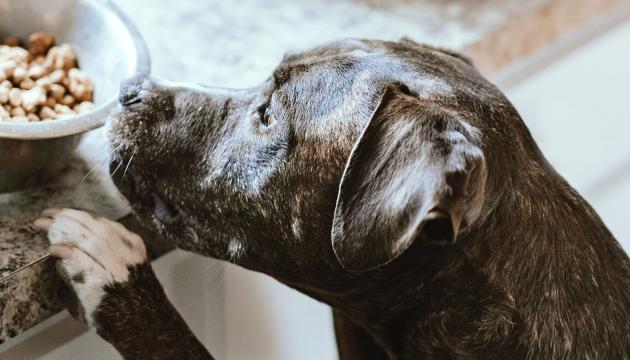

Changing the dog's diet
When it comes to changing dog food, there are a few situations that may call for it. Whether your furry friend is transitioning from puppy chow to adult kibble, or you need to tweak the dog’s diet for various reasons, it is important to handle the switch with care.
Sudden changes can upset your dog's tummy and leave you feeling frustrated. That is why we have put together this easy-to-follow guide to changing dog food, ensuring a smooth transition.
You should plan a bit ahead before making the switch. Dogs can be sensitive to abrupt dietary changes, so a gradual transition is recommended. Take note of your dog’s normal digestion patterns, as this will help you gauge any changes once you begin the transition process.
Try out the tips in this article for changing dog food and avoid any tummy troubles for your dog friend while saving your own nerves in the food swapping hassle.
Changing dog food: Easy tips
- Timing: Pick a calm time for changing dog food, without major life changes or other stress factors that could affect your dog.
- Step by step: Gradually introduce the new food, allowing the dog’s taste buds and tummy to adapt at their own pace.
- New kibble as treats: Begin by using the new kibble as a tasty reward during training sessions or walks.
- Mix it up: To help your dog transition smoothly, start by blending small amounts of the new food with the current one. Start slow and gentle, mixing about 1/5 of the new food on the first day.
- Little by little: As the days go by, gradually increase the proportion of the new food while reducing the old one. This way, your dog will have plenty of time to adjust and embrace the change with open paws.
- Be patience: After about a week, if your dog is happily munching away on the new food alongside the old one, you can start serving only the new food. But if your furry companion needs more time to adapt, no worries! Keep mixing things up until they are ready.
- Is the dog’s tummy working like it should? Sometimes changing dog food can cause an upset stomach. The quantity and consistency of your dog's poop can indicate how well the food change is going and if the food agrees with your dog. If the stools are too loose or there is a large amount of it, adjust the ratio or quantity of the old and new food.
- Tip for a picky eater: Boost the dog’s mealtime excitement by mixing a few tasty treats into the food bowl.
- Add variety: Mix some wet dog food or different types of meat to spice things up! Your dog will appreciate the variety and the extra flavours. Read more about how to add variety to your dog’s diet.
What else to consider when changing dog food?
There are still a few things you should keep in mind when changing dog food.
Remember, it is not a good idea to switch the dog’s food constantly, especially if the dog has not been exposed to a variety of flavours from an early age.
Patience is the key! Even a couple of weeks might not be enough for your four-legged friend to get used to a new food, so give the dog plenty of time to adjust.

Now, let's talk about sticking to the same brand. If you decide to switch to another type of food within the same dog food brand, it usually goes smoothly since the quality remains consistent. However, if you are changing dog food due to specific issues like tummy troubles, it is best to opt for something completely different. Let's say your dog has been munching on dry food with chicken and rice, so try a grain-free option with a different protein source.
Carefully designed PrimaDog's dog foods nourish your dog’s body and give you a peace of mind, so you can kick back and relax while your furry friend enjoys a taste of Nordic happiness. Learn more about us and our products.





